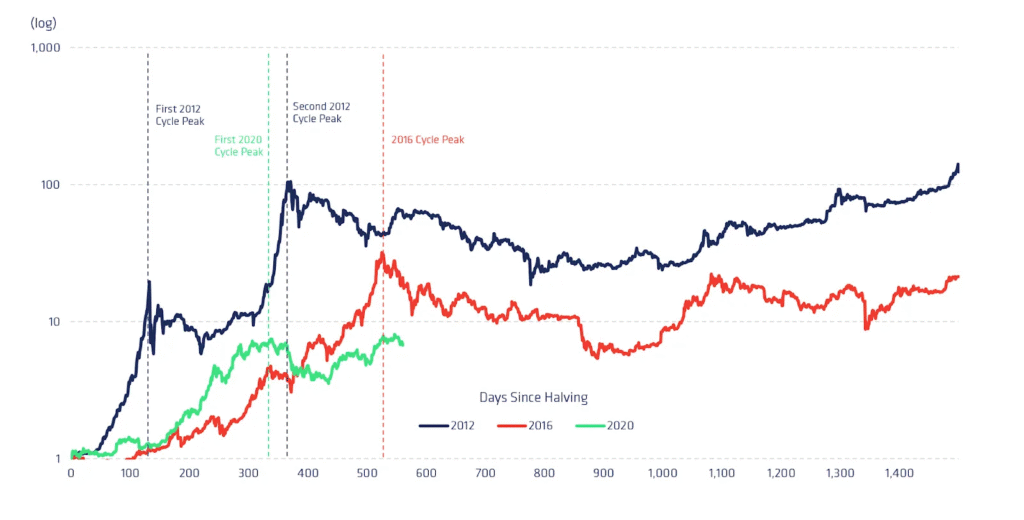While traditional assets also experience cycles, crypto’s market behavior has unique traits:
- Shorter cycles – Crypto cycles often happen over months or a few years rather than decades.
- Higher volatility – Price swings in crypto are far more extreme.
- Retail-driven – A large portion of trading volume comes from individual investors, making the market more emotional and reactive.
- Influence of narratives – Crypto is highly susceptible to hype cycles around new trends (e.g., ICOs in 2017, NFTs in 2021, AI tokens in 2023).
So while the overall structure of market cycles is similar, the speed and intensity in crypto are significantly amplified.
🧩 Factors That Influence Crypto Cycles
- Bitcoin Dominance
Bitcoin often leads the market. When BTC rises, altcoins follow. When it crashes, the whole market tends to collapse. - Regulation
New laws or bans (e.g., China’s crypto mining crackdowns) can trigger cycle shifts by affecting investor confidence. - Technology and Adoption
Breakthroughs like Ethereum 2.0, scaling solutions, or mass integration by payment systems can drive long-term uptrends. - Global Macro Events
Economic crises, inflation fears, or central bank policies often correlate with increased or decreased crypto interest. - Halving Events
As mentioned earlier, Bitcoin’s programmed scarcity model plays a key role in triggering bull cycles.
“Bitcoin Market Cycles Over Time: Peaks, Troughs & Trend Shifts”
This chart visualizes multiple Bitcoin market cycles over the years, marking significant peaks and troughs. Notice how each cycle includes an extended upward trend (bull phase), followed by corrections and sometimes consolidation periods. These patterns reflect recurring investor sentiment, macro influences, and volatility triggers—key factors in understanding the rhythm of crypto cycles.

❓ Is It Just a Myth?
Some argue that crypto market cycles are narrative-driven hindsight biases. In other words, we recognize patterns after they happen, but they’re not reliable for predicting the future.
Skeptics point out that:
- Past performance doesn’t guarantee future results.
- Each cycle involves different catalysts—ICOs in 2017 vs. NFTs and DeFi in 2021.
- The crypto market is still young and evolving, and global factors (like institutional adoption or regulation) can alter expected patterns.
While there’s truth to this, the recurring structure of euphoria-followed-by-capitulation is hard to ignore.
🛠️ How Investors Can Use This Information
Understanding market cycles doesn’t mean you can time the market perfectly, but it can:
- Help manage emotions: Recognizing where we might be in a cycle can prevent impulsive decisions.
- Encourage long-term strategy: Accumulating during bear markets and being cautious during euphoric uptrends is historically safer.
- Guide risk management: Knowing when the market is overheated can help you take profits before a crash.
✅ Conclusion: Reality with Nuance
Cryptocurrency market cycles appear to be real patterns, driven by both technical mechanisms like Bitcoin halvings and psychological behaviors. However, they are not set in stone, and interpreting them requires context, experience, and humility.
Rather than trying to perfectly predict market tops and bottoms, it’s more useful to understand the rhythm of the market, stay informed, and develop a disciplined investment approach. Whether you see them as reality or myth, recognizing market cycles is a powerful tool in the ever-volatile world of crypto.